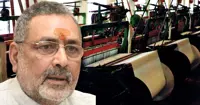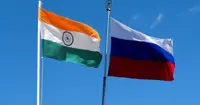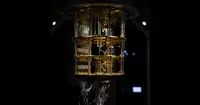Global cancer drug spending hit $100 billion in 2014: IMS Health
05 May 2015
Global spending on cancer medicines reached $100 billion in 2014, increasing by 10.3 per cent from the 2013 levels and by over 33 per cent compared to $75 billion five years earlier, according to an IMS Health report released today.
Driven by expensive newer treatments in developed markets, IMS forecasts the market for cancer drugs to rise to $117 billion to $147 billion in 2018 - a compound annual growth rate of 6-8 per cent.
Oncology medicines, including supportive care drugs that address things like nausea and anemia, now command a 10.8 per cent share all drugs consumed globally.
Growth in global spending on cancer drugs - measured using ex-manufacturer prices and not reflecting off-invoice discounts, rebates or patient access programmes - increased at a compound annual growth rate (CAGR) of 6.5 per cent on a constant-dollar basis during the past five years, says the report.
Oncology spending remains concentrated among the US and five largest European countries, which together account for 66 per cent of the total market, while the rising prevalence of cancer and greater patient access to treatments in `pharmerging' nations continues to grow and now accounts for 13 per cent of the market.
The study, Developments in Cancer Treatments, Market Dynamics, Patient Access and Value: Global Oncology Trend Report, is a comprehensive review and updated perspective on the current and future clinical landscape, marketplace dynamics for oncology-related pharmaceuticals, and patient access to medicines and their value.
Targeted therapies have dramatically increased their share of the total global oncology spending, rising 14.6 per cent CAGR during the past five years with steady increases across all regions.
AMS Health expects competition among developers of drugs such as those that spur the immune system to fight cancer to help moderate costs. At present, drug majors including Bristol-Myers Squibb, Merck, Roche, AstraZeneca and others are in the race to develop such drugs.
"We're in for a period of intense competition among alternative treatments, which is a different dynamic than we've seen in the past where the progress has been a little slower and individual drugs had a little more time," said Murray Aitken, executive director of IMS Institute for Healthcare Informatics, which compiled the report.
The United States accounted for 42.2 per cent of total spending, followed by the top-five European markets, comprising Germany, France, Britain, Spain and Italy.
In the big-five European markets, oncology spending rose to 14.7 per cent of total drug spending, up from 13.3 per cent in 2010, while US oncology spending increased to 11.3 per cent of the total from 10.7 per cent over the same period.







.webp)























